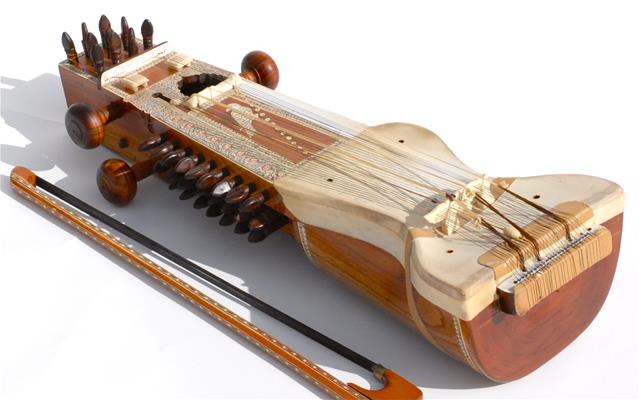Sarangi, the Indian Classical musical instrument is bringing all the melody and further expanding its legacy in the Indian classical music industry.

Form Factor
Sarangi is a musical instrument, which is bowed, and short necked in nature. It is a small instrument, which is two and a quarter feet high, with three main parts consisting of the main body and resonator, the neck and the peg box. It has three main playing strings made of gut and a drone metal string. It consists of 36 sympathetic strings, which run under the main strings. The instrument has a roughly rectangular shaped and slightly waisted body and broad fretless neck generally carved from a single piece of wood.
Playing Sarangi
The musician who will be playing the instrument has to be seated, holding the instrument against his/her left shoulder in a vertical position and will play the instrument with an arched bow held in an underhand grip in their right hand. Cuticles present in the Sarangi in the left hand of the musician can be pressed against the strings for different sounds and coming up with specific pitches. The unique bowing technique of the instrument enables a Sarangi player to produce continuous ‘Meend’ and ‘Gamaks’, making it a popular accompanying instrument.
The Sarangi is played mostly in traditional music in several parts of India. To be precise, Punjabi folk music, Rajasthani folk music and Boro folk music implements the usage of Sarangi in their culture. The instrument is also quite popular in the neighboring countries of Pakistan and Bangladesh. The Sarangi is famous within traditional music genres as it possesses the capability to imitate human voice with the help of its vocal ornaments ‘Gamaks’, which refer to the shakes in a voice and ‘Meend’, which refer to the sliding movements.

History
The name of the instrument is highly influenced and one can say that it is derived from the bow of Lord Vishnu as the instrument is played in a bowing position. The word in the name of the instrument has a larger significance as it represents three melody strings. The most common folk etymology discusses that the word Sarangi is derived from ‘Soi Rang’, which refers to a hundred colors. It goes on to point towards the fact that a Sarangi is capable of producing vocal music of many styles, hence, proving its flexible tenability and also its ability to produce a large palette of tonal color and emotional nuance.
Facts of a Sarangi Musician
It has been widely observed that musicians performing with a Sarangi are closely associated with vocal music. While doing a performance with a solo Sarangi, it includes a full scale ‘Raag’ presentation with an extensive ‘Alap’ with an ever-increasing intensity and various compositions with increasing tempo known as ‘Bandish’.
Music enthusiasts from around the world have came across many Sarangi players and have observed the fact that it is very rare to find a Sarangi player unaware of the words of classical music compositions. The words of classical music compositions are generally present during the musician’s performances, which includes the types of elaboration, its organizational structure, and tempo, the relationship between the sound and the silence and its presentation of ‘Khyal’ and ‘thumri’ compositions. The vocal quality of the music instrument Sarangi falls under a different category than that of a ‘Sitar’, which tries to imitate the nuances of ‘Khyal’.
Renowned Personalities
India is blessed with several famous Sarangi players who have always performed with their heart and soul and has left a mark in the Indian classical music industry. Some of the famous Indian music artists who performed with Sarangi as their main musical instrument are Sultan Khan, Sabri Khan, Aruna Narayan, Dhruba Ghosh, Ramesh Mishra and many other renowned Indian musical artists.
Popular Indian musician, vocalist and Sarangi player Ustad Faiyaz Khan has provided with his personal insights praising the Sarangi as a popular accompanying instrument as he went on to state the fact that he has been playing Sarangi from his earlier days of childhood. He shared his experience after his father’s death when he ultimately realized and decided of going on with his family tradition and met his guru Pt. Ram Narayan and Ustad Lateef Khan belonging from AIR Bhopal.
The musician also went to state the legacies of some famous musicians from the 20th century in the form of Bundu Khan and went on to mention the names of Ghulam Sabir, Shakur Khan and Gopal Mishra. The musician also went to explain that in order to learn playing a sarangi, one has to listen to it closely and connect with his or her own thoughts.
Sarangi is a trademark Indian classical musical instrument, which will further expand the legacy of Indian classical and folk music. Artists from around the world are inspired by Indian classical music. Like any other musical instruments, Sarangi has its own style, charisma, emotion and its personality because music is all about emotion and instruments are played to portray it.





